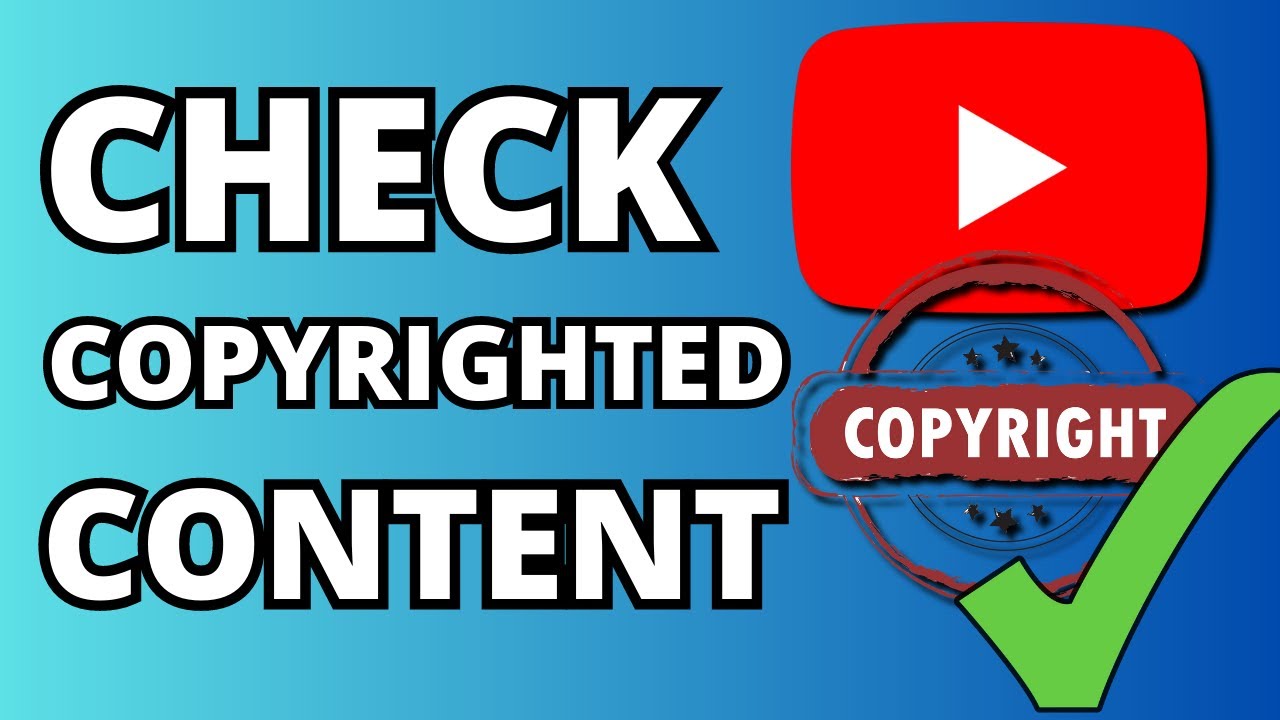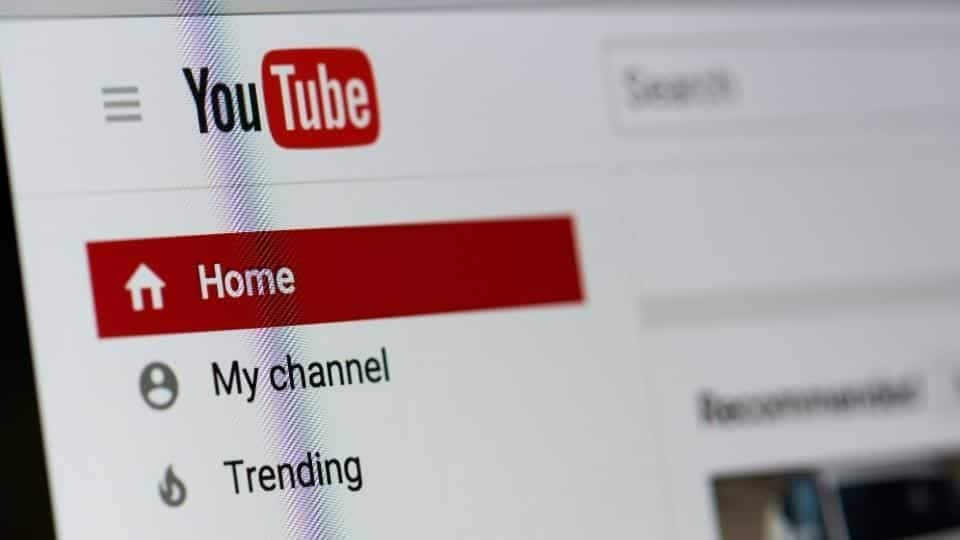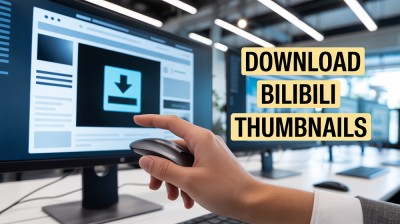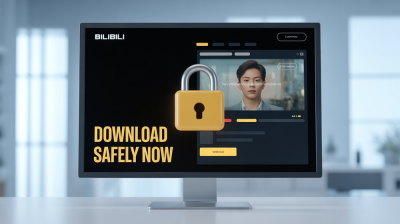Creating content for YouTube is an exciting venture, but it comes with its own set of challenges, particularly concerning copyright. Many budding creators mistakenly believe that if they find a song or video online, they can use it freely. However, copyright laws are intricate, and failing to understand them can lead to your content being pulled down or worse, legal action. In this post, we’ll explore the basics of copyright issues on YouTube and how you can protect yourself before hitting that upload button.
Understanding Copyright Law and Fair Use

Copyright is a legal term that gives the creator of original work exclusive rights to its use and distribution. This means that if you create a video, a song, or any other piece of content, you own it. But wait! What does this mean for you as a YouTuber?
First, let’s break down some key terms:
- Copyright: The exclusive right to use, distribute, or modify a creative work.
- Fair Use: A legal doctrine that allows limited use of copyrighted material without needing permission from the rights holders.
- Public Domain: Works that are not protected by copyright and can be used freely.
Understanding these concepts is critical. Fair use, in particular, can provide some leeway for creators. It generally allows you to use copyrighted material under specific circumstances, but there are important factors to consider:
- The Purpose of Use: Non-commercial, educational, or commentary purposes are more likely to be deemed fair use.
- The Nature of the Work: Using factual works is more likely to qualify as fair use than using creative works.
- The Amount Used: Using a small portion of a work is more likely to be considered fair use than using a large excerpt.
- The Effect on the Market: If your use could replace the original work and harm its market, it’s less likely to be fair use.
For example, if you’re creating a video that critiques a popular song, including a short clip of that song could be considered fair use, especially if your commentary adds value. However, if you upload the entire song with no transformative content, you’re likely inviting copyright issues.
To protect yourself, consider the following:
- Always give credit when using someone else's work, even if you believe it falls under fair use.
- Look for copyright-free or Creative Commons licensed material. Websites like Freepik or Bensound offer resources you can use safely.
- When in doubt, consult with a copyright professional or legal expert to avoid potential pitfalls.
In conclusion, being knowledgeable about copyright law and fair use is essential for any YouTuber. It not only protects your content but also respects the hard work of other creators. So before you upload that fantastic video, make sure you’re backing it up with the right understanding of copyright issues!
Also Read This: How Much Does YouTube Pay Pakistani YouTubers? Insights and Tips
3. Tools for Verifying Copyrighted Content

When it comes to uploading videos on YouTube, ensuring that your content is free from copyright infringement is crucial. Fortunately, there are several tools available that can help you verify whether your material is copyrighted or not. Here are a few that you might find particularly useful:
- YouTube's Content ID: This is the platform's own system designed to identify copyrighted content. When you upload a video, Content ID scans it against a massive database of copyrighted works. If your video matches any content in the database, you'll receive a notification, and options will be presented to you, such as monetizing, removing, or disputing the claim.
- Google Reverse Image Search: If your video includes images, you can use Google’s reverse image search to check if those images are copyrighted. Simply upload the image or paste the URL, and Google will show you where else that image appears on the web, helping you identify its source.
- TinEye: Similar to Google’s tool, TinEye allows you to check for copyrighted images. It’s especially handy if you want to ensure that your visuals are original or used with permission. Just upload the image, and TinEye will provide you with results showing where that image exists online.
- Creative Commons Search: This is a fantastic resource if you're looking for content that you can use legally. Creative Commons allows you to find images, music, and videos that are available for reuse, often with specific conditions. Make sure to check the license before using to ensure proper attribution.
- Copyright Office Database: If you want to dig deeper, you can search the U.S. Copyright Office's online database to check for registered copyrights. While it’s more time-consuming, it gives you a definitive answer about the copyright status of a work.
Using these tools can help you navigate the complex landscape of copyright, making it easier to create content without the fear of infringement. Remember, the goal is to respect the rights of creators while sharing your unique vision!
Also Read This: Does YouTube Show Who Viewed Your Profile? Privacy and Analytics on YouTube
4. Steps to Check for Copyrighted Material

Now that you have some tools at your disposal, let’s break down the specific steps you can take to ensure your content is copyright-free before uploading to YouTube.
- Identify Your Content: Start by clearly identifying all components of your video. This includes any visuals, music, clips from other videos, and even text overlays. The more detailed you are, the better.
- Use Content ID: After uploading your video as a private or unlisted post, let YouTube's Content ID do its magic. Check your video’s status for any copyright claims. If you receive a match, follow the instructions provided to address the claim.
- Check Images: For any images used in your video, run them through Google Reverse Image Search or TinEye to see if they are linked to copyrighted sources. If they are, seek alternative images or obtain permission from the original creator.
- Review Music Tracks: Music can be tricky! Use a service like Epidemic Sound or Artlist, which offer royalty-free music, or check the licensing on any track you’ve chosen. Don’t forget to credit the artist as per their requirements.
- Document Everything: Keep a record of all the permissions and licenses you’ve acquired. This will not only help you in case of disputes but also provide a sense of security that you’re in the clear.
- Stay Updated: Copyright laws and policies can change, so make it a habit to stay informed. Follow forums, subscribe to updates from the Copyright Office, or join creator communities to stay in the loop.
By following these steps, you can significantly reduce the risk of copyright infringement and focus on creating content that resonates with your audience. Remember, respecting the work of others is key to building a positive community on YouTube!
Also Read This: How to Link a YouTube Video on Instagram and Share Content with Your Followers
5. Using YouTube’s Content ID System
When it comes to protecting your content, YouTube's Content ID system is a game changer. This sophisticated tool functions like a digital fingerprint for videos uploaded to the platform. If you’re planning to upload your own content, it’s essential to understand how this system works and how it can help you avoid copyright pitfalls.
So, how does Content ID work? When you upload a video, YouTube scans it against a vast database of copyrighted works. If it detects any matching audio or visual content, it can automatically take action. Here are a few possible outcomes:
- Monetization: The original copyright owner can choose to monetize your video by placing ads on it, while you still retain the ability to share your content.
- Blocking: If the copyright owner doesn’t want their content shared, they can block your video from being viewed, either globally or in specific countries.
- Tracking: In some cases, copyright owners might allow your video to remain live but track its performance.
One of the best practices for creators is to always check if your content is at risk of triggering Content ID claims. You can do this by using YouTube’s built-in tools before you even hit that upload button. The “Copyright Match Tool” can help you identify if your video closely resembles any existing content.
But what if you believe your content does not infringe on any copyrights? It’s important to know that you can dispute a Content ID claim. YouTube provides a straightforward process where you can explain your case. Just remember to gather all relevant information and, if applicable, provide evidence of your ownership or fair use.
Also Read This: How to Add a YouTube Video to Instagram
6. What to Do if You Encounter Copyright Issues
Encountering copyright issues can be daunting, but knowing how to tackle them can make a world of difference. If YouTube flags your video or you receive a copyright claim, don’t panic! Here’s a step-by-step guide on how to handle it.
- Review the Claim: Start by thoroughly reviewing the details of the copyright claim. Check who made the claim and what specific content they say is infringing. This will help you understand your next steps.
- Evaluate Fair Use: If you believe your use of the content falls under “fair use,” gather your arguments. Fair use can include commentary, criticism, or educational purposes. Keep in mind that fair use is often subjective, so be prepared to justify your position.
- Dispute the Claim: If you’re confident that you have a legitimate reason to dispute the claim, use YouTube’s dispute form. Clearly articulate your case and provide any supporting documentation. This is your chance to present your argument!
- Reach Out to the Copyright Owner: Sometimes, connecting directly with the copyright owner can lead to a resolution. If possible, explain your situation and see if they would be willing to retract their claim. Be polite and professional in your communication.
- Consider Editing Your Video: If the claim seems valid and you want to keep your video online, you may choose to edit out the infringing content. Once you make the necessary changes, you can re-upload the video without issue.
Lastly, remember that familiarity with copyright laws can go a long way in avoiding issues. Educating yourself about what constitutes fair use and how licensing works will strengthen your position as a creator. Ultimately, staying mindful of copyright considerations will help you create without fear!
Also Read This: How to Create and Customize YouTubers in Infinite Craft for Your Game
7. Best Practices for Uploading Original Content
Creating and sharing original content on YouTube is an exciting venture, but it comes with its own set of responsibilities, particularly concerning copyright. Here are some best practices to ensure that you’re not only compliant but also set up for success:
- Know Your Rights: Before uploading, familiarize yourself with the copyright laws applicable in your country. Understand what constitutes fair use and what doesn’t. This foundation will help you navigate content creation more effectively.
- Create Your Own Assets: Whenever possible, create your own visuals, music, and other media. This ensures that you own the rights or have permission to use everything in your video. For example, if you’re making a travel vlog, consider shooting your own footage instead of using clips from others.
- Use Copyright-Free Resources: If creating assets from scratch isn't feasible, leverage resources that offer copyright-free images, music, and videos. Websites like Pixabay or Unsplash provide a plethora of options that you can utilize without infringing on rights.
- Seek Permission: If you want to use someone else’s work, always ask for permission. This can often lead to partnerships or collaborations that benefit both parties. For instance, reaching out to an artist whose music you love can lead to shoutouts or mutual promotion.
- Keep Records: Document your creative process. Keep records of permissions granted, licenses purchased, and any correspondence related to copyright. This can be invaluable if a copyright dispute arises later.
- Stay Up-to-Date: Copyright laws and policies on platforms like YouTube can change. Make it a habit to stay informed about these changes by following relevant blogs or subscribing to updates from YouTube itself.
By following these best practices, you’ll not only protect your content but also contribute positively to the YouTube community. Remember, original content is not just about avoiding copyright issues; it’s about showcasing your unique voice and perspective!
8. Conclusion and Final Thoughts on Copyright Verification
In the world of content creation, especially on platforms like YouTube, verifying copyrighted content before uploading is crucial. It’s not merely a legal obligation; it’s part of respecting the hard work and creativity of others while showcasing your own.
As you wrap up this discussion, here are some final thoughts to keep in mind:
- Be Proactive: Don’t wait for a copyright strike to educate yourself. Take the initiative to learn about copyright laws and best practices. This proactive approach will save you time and stress in the long run.
- Community Matters: Engaging with fellow content creators can provide insights into how they navigate copyright challenges. Join forums, attend workshops, and participate in discussions to enhance your understanding and build a supportive network.
- Embrace Creativity: Remember that originality and creativity are your best allies in avoiding copyright issues. Focus on what makes your content unique, and let that shine through! Every video is an opportunity to express your perspective.
- Don’t Be Discouraged: Navigating copyright can seem daunting, but don’t let it discourage you from creating. Use the tools and resources at your disposal, and remember that every creator faces similar challenges.
Ultimately, verifying copyrighted content is about respecting artistic integrity and fostering a vibrant creative community on YouTube. By staying informed and diligent, you can confidently share your original content while avoiding the pitfalls of copyright infringement.
 admin
admin








